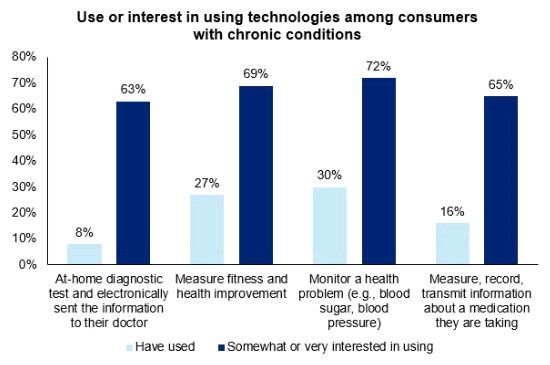This week we're delighted to feature a blog written by one of our US colleagues. In his ' My Take' Greg Reh (Principal, US and Global Life Sciences Leader, Deloitte Consulting LLP) discusses the findings from Deloitte's 2015 survey of US Health Care Consumers and shares his insights on patient engagement:
"An empowered consumer is the new breakthrough drug." This is how Daniel Kraft, Medicine and Neuroscience Chair at Singularity University, began his talk at last week's Financial Times and Deloitte Digital Health Summit. And, it's true: In a health care environment that is continually transforming, a patient-centric marketplace holds important considerations for stakeholders as they seek to adapt, innovate, and grow.
While there are different definitions, patient engagement can generally be thought of as helping individuals take action to manage and improve their health, make informed decisions, and engage effectively and efficiently with the health care system.
Much of the conversation around patient engagement has centered on health care providers. Deloitte's 2015 Survey of US Health Care Consumers found that more consumers today prefer to partner with doctors instead of relying passively on them to make treatment decisions. But, the rapid change occurring across the health care system – shifting from volume to value, innovation in new channels and mHealth, and increased complexity of patient touchpoints – has reinforced that patients are (or should be) at the center of all of this. Today, the way that life sciences companies engage with consumers could make or break patient outcomes.
Additional findings from Deloitte's 2015 Survey of Health Care Consumers highlight some of the areas that life sciences companies may have the opportunity to step in and add value. For one, consumer trust in reliability of online sources is rising. Fifty-two percent report searching online for health- or care-related information. Though trust in information from life sciences companies is among the lowest, consumer trust in this source has doubled since hitting a low in 2010. Consumers' use of technology to monitor fitness and health improvements has also grown. From 2013 to 2015, consumers' use of technology to measure fitness and health improvement goals grew from 17 percent to 28 percent.
This is promising news to anyone who believes that patient engagement can make a big difference in outcomes. Take multiple sclerosis as an example. Experts have acknowledged that patient engagement is a "linchpin" to ensuring care is multidisciplinary and coordinated for a chronic disease where new therapies impact multiple body systems and that often requires lifelong therapies and behavior change.1
The most exciting finding from our survey, in my opinion, is that consumers with chronic diseases generally show the highest levels of engagement and the largest increases in these areas. This is a promising trend that indicates those who have the greatest need to be engaged are in fact moving in that direction. Indeed, tech-based monitoring among consumers with major chronic conditions has jumped from 22 percent to 39 percent in the last two years. And, 70 percent of tech users with major chronic conditions say that utilizing health technologies has had a significant impact on their behavior.
But, the survey also found that some major gaps exist between consumers' wants and actual use of new tools and technologies to support their chronic condition. One of the largest gaps is between consumers' desire to use and actual use of technologies that can measure, record, or transmit information about medication they are taking.

These are critical gaps that need to be closed, and life sciences companies should be focused on catching up in these areas. As health plans and providers figure out how to navigate the new health care system, their roles continue to evolve. The same is true for life sciences companies. Now more than ever, these companies have the opportunity to step in and play a direct and critical role in patients' lives.
There are five critical ways that life sciences companies can support patient engagement:
- Therapy: Connecting with patients to provide access to and support with care
- Education: Delivering educational insights to inform patient decision-making and behavior
- Financial: Helping patients obtain the financial resources they require to stay on therapy
- Clinical: Providing patients with a point of contact during trials and assisting them with transitioning from clinical to commercial drug
- Engagement: Granting patients access to programs, via traditional and emerging channels, that will help support their unique treatment journeys and enable better long-term treatment outcomes
As the health care system continues to transition to a focus on value, life sciences companies should consider revisiting the strategies and services they provide around patient access, support, education, and adherence. If they don't, they could lose out on one of the best breakthrough drugs of the century – patient engagement.
Footnote
1 Peter Rieckmann, et al. Multiple Sclerosis and Related Disorders, "Achieving patient engagement in multiple sclerosis: A perspective from the multiple sclerosis in the 21st Century Steering Group," May 2015, http://www.msard-journal.com/article/S2211-0348(15)00024-3/fulltext
The content of this article is intended to provide a general guide to the subject matter. Specialist advice should be sought about your specific circumstances.
